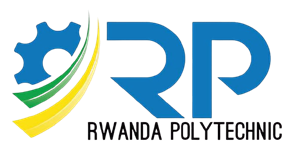
The module of physics fundamentals provides the skills, knowledge and attitudes required to apply physics fundamentals in electrical and electronics engineering. By the end of this module, the trainee should be able to describe, interpret, measure quantities, and apply the introductory concepts of basic mechanics, fluid mechanics and thermodynamics in problem-solving in the contexts related to electrical and electronics engineering.
Science skills and knowledge have been developed to reduce human’s effort to do certain work, where the main step forward was industrial revolution. The word “revolution” denotes abrupt and radical change in our socio-economic way of living. Revolution started with house/family settlements, domestication of some animals for the purpose of production, transportation and communication, next, urbanization and rise of cities, etc.
The world has faced 3 previous industrial revolutions. The first industrial revolution (Industry 1.0) spanned between 1760- 1840 and was marked with the transition from muscle power to mechanical power (i.e, Mechanization), use of coal, invention of the steam engine (i.e thermodynamics), industrializing textile and steel, and construction of railroads for transport. The second industrial revolution (Industry 2.0) started in the late 19th century and into the early 20th century, after the discovery of electrons and fluid fuel and made mass production possible, fostered by the advent of electricity, the assembly line, and use of fueled vehicles for transport.
The third industrial revolution (Industry 3.0) began in the 1960s. It is usually called the computer or digital revolution because it was catalyzed by the development of semiconductors, electronics, mainframe computing (1960s), personal computing, IT systems and Automation (1970s and 80s), the internet (1990s), clean energy, greening and the use of electric vehicles (2000s). Some among discoveries across these IR have been obsolete in some world societies while others are still at beginning stage, emerging and/or being used.
We are now facing the 4th industrial revolution (Industry 4.0), which is a fusion of technologies across the physical, digital and biological worlds, which covers fields like sensors, actuators, Networks, Cyber Physical Systems, artificial intelligence (AI), Machine learning, Advanced robotics, the internet of things (IoT), autonomous vehicles, Big Data, global Blockchain, 3D printing, nanotechnology, biotechnology, materials science, energy storage, genetic editing and sequencing, virtual and augmented reality, and quantum computing, electrical vehicles and so on. How far are we adopting the 4IR Skills (declining, stable, growing)? The required levels of understanding of the changes underway are still low to respond to 4IR, skills, knowledge and attitudes and innovations to mitigate the disruption are still inadequate. Consistent learning of science and engineering would reduce such inadequacy and avoid a popular backlash to technological revolutions.
- Enseignant: Vincent Uzabakiriho

